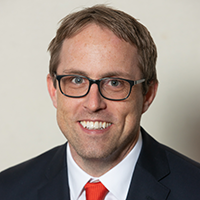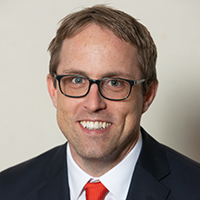
A Common Trait Shared by Elite Bankers
 If you talk to enough executives at top-performing banks, one thing you may notice is that not all of them see themselves as bankers. Many of them identify instead as investors who run banks.
If you talk to enough executives at top-performing banks, one thing you may notice is that not all of them see themselves as bankers. Many of them identify instead as investors who run banks.
It’s a subtle nuance. But it’s an important one that may help explain the extraordinary success of their institutions.
This came up in a conversation I had last week with the president and chief operating officer of a $2.6 billion asset bank based in New England. (I’d share the bank’s name, but they prefer to keep a low profile.)
His bank is among the most profitable in the country and is a regular fixture atop industry rankings, including our latest Bank Performance Scorecard.
Its profitability and earnings growth are consistently at the top of its peer group each year. More importantly, its total shareholder return (dividends plus share price appreciation) ranks in the top 3% of all publicly traded banks since the current leadership team gained control in 1993.
The distinction between investors and bankers seems to lay in how they prioritize operations and capital allocation.
For many bankers, capital allocation plays a supporting role to operations. It’s a pressure release valve that purges a bank’s balance sheet of the excess capital generated by operations. As capital builds up on the balance sheet, it impairs return on equity, which can foster the illusion that a bank isn’t earning its cost of capital.
To investors, the relationship between operating a bank and allocating its capital is inverted: The operations are the source of capital, while the efficient allocation of that capital is the ultimate objective.
Bankers who identify as investors also tend to be agnostic about banking. If a different industry offered better returns on their capital, they’d go elsewhere. They’ve gravitated to banking only because it’s a peculiarly profitable endeavor. In no other industry are businesses leveraged by a factor of 10 to 1 and financed with government-insured funds.
There are plenty of other bankers that fall into this categorization. The recently retired chairman of Citigroup, Michael O’Neill, is one of them. He said this when I interviewed him recently for a profile to be published in the upcoming issue of Bank Director magazine.
O’Neill’s time as chairman and CEO of Bank of Hawaii bears this out. A major objective of his, after refocusing its geographic footprint, was reducing the bank’s outstanding share count.
Bank of Hawaii had 80 million shares outstanding when O’Neill became CEO in 2000. When he left 4 years later, that had declined by 38% to only 55 million outstanding shares. This helped the bank’s stock price more than triple over the same stretch.
Another example is the Turner family, which has run Great Southern Bancorp for almost half a century. Since going public in 1991, Great Southern has repurchased nearly 40% of its original outstanding share count. A $2 million investment during the initial public offering would have been worth $140 million last year.
The Turners never said this when I talked with them last year, but it seems safe to infer that they view banking in a similar way. They’re not trying to build a banking empire for the sake of running a big bank. Instead, they’re focused on creating superior long-term value.
This philosophical approach coupled with meaningful skin in the game insulates a bank’s executives from external pressures to chase short-term growth and profitability at the expense of long-term solvency and performance.
“Having a big investment in the company … gives you credibility with institutional investors,” Great Southern CEO Joe Turner told me last year. “When we tell them we’re thinking long term, they believe us. We never meet with an investor that our family doesn’t own at least twice as much stock in the bank as they do.”
M&T Bank Corp. offers yet another textbook example of this. Of the largest 100 banks operating in 1983, when its current leadership team took over, only 23 remain today. Among those, M&T ranks first when it comes to stock price growth
I once asked its chairman and CEO René Jones what has enabled the bank to create so much value. One of the main reasons, he told me, was that they could gather 60% of the voting interests in the bank around the coffee table in his predecessor’s office.
And the bank in New England that I mentioned at the top of this article is the same way. The family that runs it, along with its directors, collectively hold 40% of the bank’s stock.
The moral of the story is that it’s tempting to think that capital allocation should play second fiddle to a bank’s operations. But many of the country’s best bankers see things the other way around.



